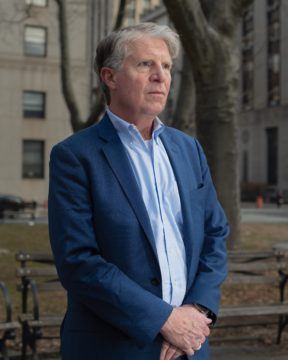Jane Mayer in The New Yorker:
 On February 22nd, in an office in White Plains, two lawyers handed over a hard drive to a Manhattan Assistant District Attorney, who, along with two investigators, had driven up from New York City in a heavy snowstorm. Although the exchange didn’t look momentous, it set in motion the next phase of one of the most significant legal showdowns in American history. Hours earlier, the Supreme Court had ordered former President Donald Trump to comply with a subpoena for nearly a decade’s worth of private financial records, including his tax returns. The subpoena had been issued by Cyrus Vance, Jr., the Manhattan District Attorney, who is leading the first, and larger, of two known probes into potential criminal misconduct by Trump. The second was opened, last month, by a county prosecutor in Georgia, who is investigating Trump’s efforts to undermine that state’s election results.
On February 22nd, in an office in White Plains, two lawyers handed over a hard drive to a Manhattan Assistant District Attorney, who, along with two investigators, had driven up from New York City in a heavy snowstorm. Although the exchange didn’t look momentous, it set in motion the next phase of one of the most significant legal showdowns in American history. Hours earlier, the Supreme Court had ordered former President Donald Trump to comply with a subpoena for nearly a decade’s worth of private financial records, including his tax returns. The subpoena had been issued by Cyrus Vance, Jr., the Manhattan District Attorney, who is leading the first, and larger, of two known probes into potential criminal misconduct by Trump. The second was opened, last month, by a county prosecutor in Georgia, who is investigating Trump’s efforts to undermine that state’s election results.
Vance is a famously low-key prosecutor, but he has been waging a ferocious battle. His subpoena required Trump’s accounting firm, Mazars U.S.A., to turn over millions of pages of personal and corporate records, dating from 2011 to 2019, that Trump had withheld from prosecutors and the public. Before Trump was elected, in 2016, he promised to release his tax records, as every other modern President has done, and he repeated that promise after taking office. Instead, he went to extraordinary lengths to hide the documents. The subpoena will finally give legal authorities a clear look at the former President’s opaque business empire, helping them to determine whether he committed any financial crimes. After Vance’s victory at the Supreme Court, he released a typically buttoned-up statement: “The work continues.”
If the tax records contain major revelations, the public probably won’t learn about them anytime soon: the information will likely be kept secret unless criminal charges are filed. The hard drive—which includes potentially revealing notes showing how Trump and his accountants arrived at their tax numbers—is believed to be locked in a high-security annex in lower Manhattan. A spokesman for the Manhattan District Attorney’s office declined to confirm the drive’s whereabouts, but people familiar with the office presume that it has been secured in a radio-frequency-isolation chamber in the Louis J. Lefkowitz State Office Building, on Centre Street. The chamber is protected by a double set of metal doors—the kind used in bank vaults—and its walls are lined with what looks like glimmering copper foil, to block remote attempts to tamper with digital evidence. It’s a modern equivalent of Tutankhamun’s tomb.
More here.
